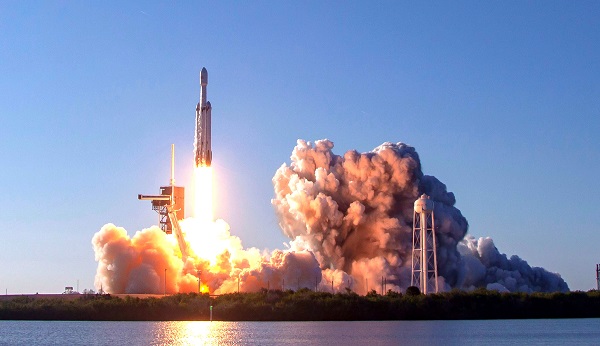NROL-153 Launch by SpaceX: Advancing Satellite Operations – On January 9, 2025, SpaceX Lancering NROL-153 mission for the National Reconnaissance Office from Vandenberg Space Force Base in California, successfully deploying its next set of Starshield satellites. After this, NASA’s annual Falcon 9 operations on the West Coast came to a close. The NRO’s initiative on the system space will also further its satellite building plans. Likewise, it brings into relief the bigger role played by automation and artificial intelligence and how it is being adopted into satellite management.
NROL-153 Launch Overview and Significance
This launch marked NASA’s final yearly run of the Falcon 9 to the West Coast. While they sent another batch of the Starshield satellites off for National Reconnaissance Office use by 7 p.m. January 9, 2025.
NROL-153 launched last night at 7:53 PM PST or 10:53 PM EST or 0353 UTC from Vandenberg Space Force Base using pad 4 East. This is the fourth orbital launch this year from SpaceX.
It was the booster from the first stage of the mission that belonged to SpaceX’s fleet; this was the 22nd flight for tail number B1071. Among such earlier missions were rideshares such as Transporter-8 and Transporter-9, Bandwagon-2; NRO missions NROL-87, NROL-85, and NROL-146; not to mention flights for NASA’s SWOT spacecraft, alongside launching 13 Starlink satellites.
Also read: Supreme Court to Decide TikTok’s Future: National Security vs. Free Speech
Falcon 9 and Booster Recovery Details
B1071 landed on the drone ship Of Course I Still Love You, approximately eight minutes into the flight. So far, this is the 116th recovery of OCISLY and the 394th recovery of a Falcon rocket booster.
This will be the first launch of NRO’s proliferated architecture satellite constellation under this 2024 launch plan. That allows for reaching a count of at least 5 Falcon 9 rockets launched on those missions within this year in the 2025 time frame.
Different types of other launch-aside NRO-153, NRO-57, NRO-192, NRO-48, and NRO-145.
The agency announced in a pre launch press release that “overseeing hundreds of low Earth orbit satellites has turned out to be one of the Number One priorities through several presentations from NRO.”
NRO’s Proliferated Satellite Architecture
These proliferated launches will continue until 2028, with the thousand-satellite constellation on the verge of blooming debriefing rates, augmented coverage, and faster dissemination of information for the benefit of the nation and its allies.
In addition, it presents operation capability maturing into thousands of satellites in low Earth orbit as an evident priority of NRO. Last month at the Space Power Conference, Dr. T.J. Lincoln, NRO’s director of mission operations, said, “We’ve got to continue the push towards automation, and we must get better at continuously operating to care for the elusive system.”
“What nature of a silk handkerchief is there for automation (at least along these proliferated constellations), which has been built in from Day 1?” Lincoln speculated. “As the ops lead for the NRO, I’m adamantly stating that automation capabilities need to be included from inception because there’s just no way of operating hundreds of satellites using the old ways anymore.” The intent is to re-task on autopilot, allowing human knowledge and experience to intervene and validate decision-making in exceptional circumstances to fit operations requirements.
The Role of Automation in Satellite Operations
Less positive automation, proliferation of it; he stated; as an operational lead at NRO, embed these into all those systems, for we have no way of understanding how to operate multiple hundreds of satellites like we do today.” This has to become an automated product, with a human being in the loop to fine-tune it so that we get success in the operations.
Space Launch Director Col. Eric Zarybnisky, US Space Force, indicated automation will also accelerate the process of delivering the information from on-orbit intelligence collection to those needing it most.
“If it weren’t for the conductive actions, we would not be able to communicate knowledge very fast. By quick, I mean in seconds! Seconds, not hours,” remarks Zarybnisky. “In other words, we should be able to put that knowledge in the hands of the warfighter and decision-maker at a time when they are making the decision and that means in seconds. Automation, AI, and ML will realize that.”
Reports link those starshield satellites to big satellite constellations under production with Northrop Grumman and SpaceX; however, they couldn’t specify whether satellites such as that one were included in this satellite constellation.
Those are, in their own right, variants of the commercially specified government satellites meant for Starlink. These satellites are designed to meet the specific needs of government operations, providing enhanced capabilities such as secure communications and advanced data processing.








